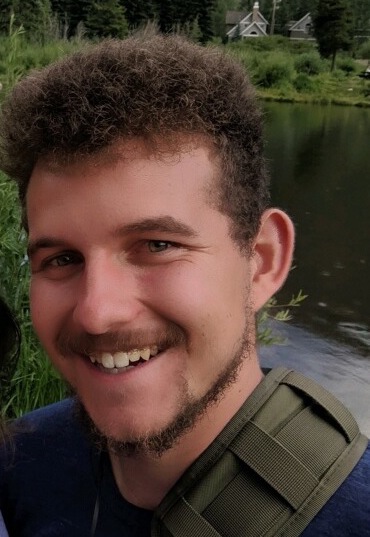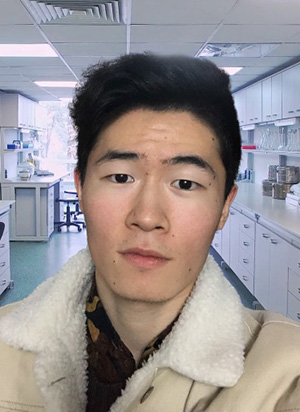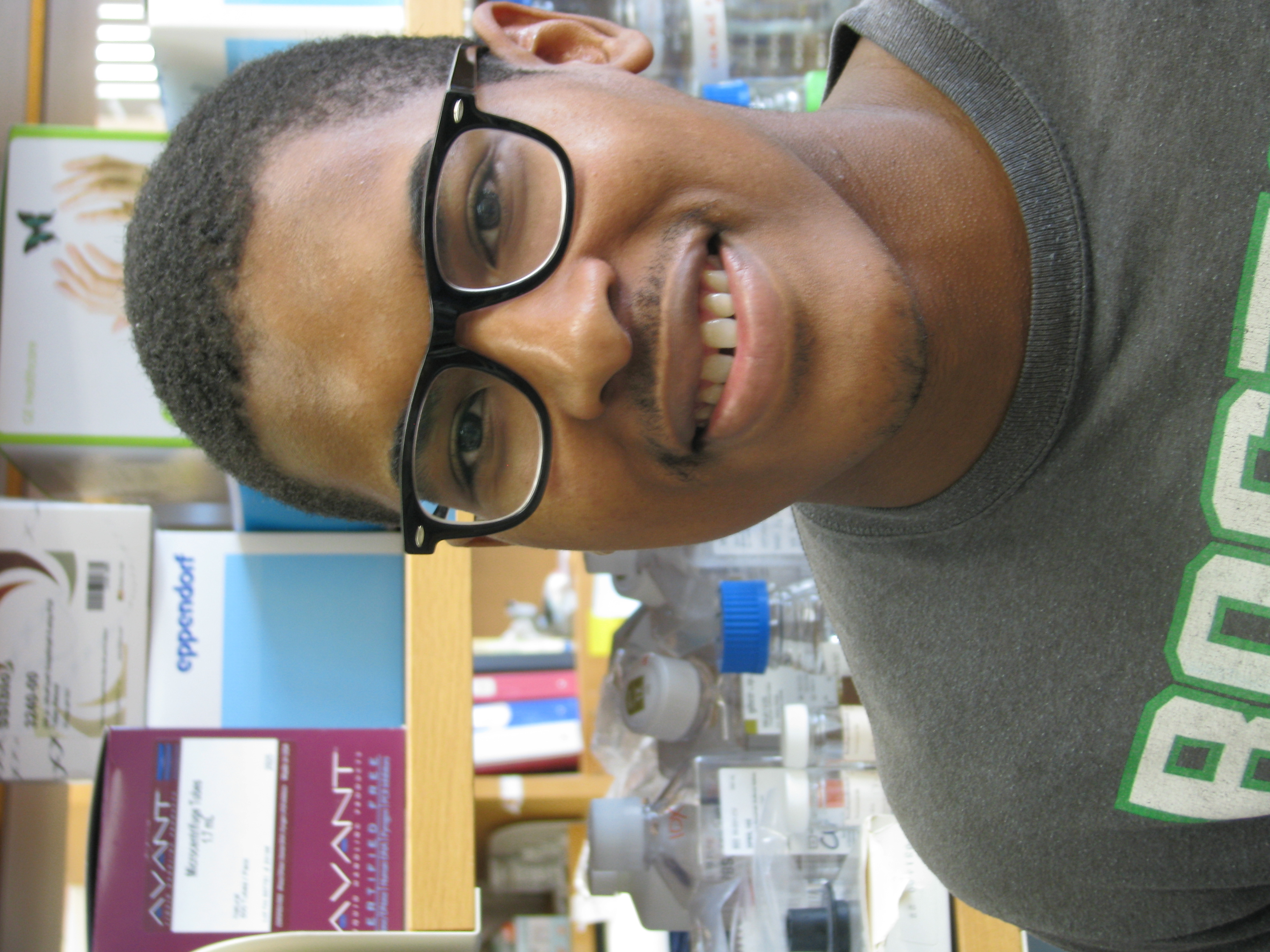News
Alaa Ahmed Passes her Qualifying Exam!
Friday, October 14, 2022

BGG graduate student Alaa Ahemd passed her qualifying exam on Thursday, October 13th. Since joining the laboratory of Stephen Dewhurst, Ph.D last year, Alaa has focused her research towards improving LAIV Efficacy and understanding methods underlying HIV silencing in astrocytes.
Alaa’s thesis proposal is can be reviewed below.
Congratulations Alaa!
Title: Interplay of Cellular Restriction Factors and Methamphetamine in HIV-Infected Astrocytes – by Alaa Abdelmageed Ahmed.
Abstract: Since its introduction in 1996, cART has been most effective in reducing AIDS-related mmortality. With more people living with HIV, long-term effects of the infection are becoming increasingly important to study. One such effect, HIV-associated neurocognitive disorder (HAND), is a set of cognitive and motor defects developed from early infection of the CNS. The viremia of individuals on cART is decreased to undetectable levels, although the virus is not completely eliminated, suggesting the presence of viral reservoirs responsible for long-term effects of infection. In the bloodstream, resting CD4+ T-cells are widely studied as an HIV reservoir, supporting low-levels of viral replication. In the CNS, microglial cells support productive HIV replication while astrocytes restrict it. Astrocytes lack entry receptors for HIV, yet upon entry, the virus is unable to induce a productive infection, which suggests presence of intracellular factors that play a role in this restriction. SAMHD1, a global restriction factor, and FEZ1, a brain-specific factor, have been shown to restrict viral replication by endonuclease/ATPase activity, and inhibiting nuclear import, respectively. Their roles; however, are not clearly understood in astrocytes. Another contributing factor in the development of HAND, methamphetamine, has been shown to worsen prognosis by increasing neuroinflammation in the same regions targeted by HIV. Studying how methamphetamine alters the outcome of HIV replication in astrocytes along with cellular restriction factors would be important in understanding how the viral reservoir in the CNS contributes to HAND.
Zachary Ward Passes his Qualifying Exam!
Thursday, October 13, 2022

Earlier this week, Zachary Ward passed his Qualifying Exam. Since joining the BGG Program in the fall of 2020, Zach’s studies have focused on the role of SUMOylation of HSF1 in the coordination of the heat shock response. Zach has pursued his thesis research in the laboratory of Andrew Samuelson, Ph.D.
Zach’s thesis abstract is below.
Congratulations Zach!
Abstract: One hallmark of aging is the gradual decline in function of the proteome (proteostasis). This decline is linked to a loss of coordination of the proteostatic network(PN), which maintains the highly regulated processes of protein folding, degradation, and translation. How biological systems maintain protein homeostasis through cell intrinsic and cell non-autonomous mechanisms across different cell types remains poorly understood. We have identified homeodomain-interacting protein kinase (HPK-1) as a neuronal regulator of aging and proteostasis in C. elegans. In this project, I seek to further our understanding of HPK-1 regulation of aging and proteostasis and to identify conserved neuronal functions of this family of transcriptional co-factors that preserve proteostasis. The long-term objective of this project is to identify conserved mechanisms through which HPK-1 regulation of longevity and proteostasis. My central hypothesis is that HPK-1 control of longevity and proteostasis occurs through the control of specific transcriptional outputs maintained via regulatory checkpoints; specifically via negative regulators and target phosphorylation. To investigate these ideas, I will look for regulatory processes that control HPK-1 kinase activity like autophosphorylation. I will look for negative regulators of HPK-1 by screening HPK-1 longevity phenotypes through a library of all known phosphatases in the C. elegans. I will also use mass spectrometry to identify conserved transient and stable interactions of HPK-1 to reveal potential HPK-1 targets that control longevity. Together these findings will highlight key targets and pathways that work inside the HPK-1 controlled longevity program which will provide us with key therapeutic targets which could aid in therapy for age-related diseases.
Jessica Perciaccante Passes her Qualifying Exam!
Saturday, October 1, 2022

Jessica Perciaccante passed her Qualifying Exam on Friday September 30th. Since joining the BGG Ph.D. Program, her research has focused on the function of lncRNAs in heart development and optimizing techniques to identify direct protein interactions with lncRNAs. Jessica is conducting her graduate research in the laboratory of Douglas M. Anderson, Ph.D.
Jessica’s thesis proposal can be read below.
Congratulations Jessica!
Title: Investigating CARDINAL as a novel heart specific lncRNA regulator of Cardiac Transcription
Abstract: Heart development and repair are governed by a network of protein-coding transcription factors and noncoding RNAs that coordinate the expression of genes involved in cardiomyocyte proliferation, differentiation, and contractility. Serum Response Factor (SRF) is a transcription factor that regulates cardiac gene expression in heart development, function, and injury response. Ternary Complex Factor (TCFs), pro-mitogenic co-factors, and Myocardin Related Transcription Factors (MRTFs), pro-myogenic co-factors, compete to bind the same docking site on SRF. Activated TCFs can displace MRTFs bound to SRF and act as dominant inhibitors of myogenic gene expression. However, the mechanism through which MRTFs suppress TCF-SRF transactivation of mitogenic targets remains poorly understood.
Long noncoding RNAs (lncRNAs) comprise a diverse set of functional RNAs which mediate their activities through RNA-RNA, RNA-DNA and RNA-protein interactions. We recently discovered and characterized a conserved novel heart-specific lncRNA upstream of the SRFcoactivator myocardin, which we named the myocardin-adjacent-lncRNA, or CARDINAL. We hypothesize Cardinal functions as an important RNA co-regulator of the cardiac gene expression networks required to maintain cardiac function in response to age and injury. In mice and humans, CARDINAL is expressed in the developing and adult heart and is upregulated after cardiac injury. Genetic ablation of the CARDINAL transcript in mice resulted in significant reduction in left ventricular pump function with age and following cardiac injury. Adult CARDINAL KO mice had dysregulated SRF-dependent cardiac gene expression. Using RNA immunoprecipitation assay assays, we have determined Cardinal forms a strong interaction with the transcription factor SRF. An in vitro luciferase assay demonstrated CARDINAL can suppress SRF-dependent transactivation of a mitogenic promoter.
This proposal aims to elucidate the molecular mechanism through which CARDINAL regulates cardiac gene expression. In the first aim, we will use Chromatin Isolation by RNA Purification in human and mouse cardiomyocytes to test our hypothesis that CARDINAL forms chromatin interactions at transcriptionally suppressed mitogenic promoters. In the second aim, we hypothesize that CARDINAL interacts with SRF, its co-factors, and transcriptional regulators. We will elucidate protein binding partners of CARDINAL with S1m tagged RNA purification combined with mass spectrometry. In the third aim, we hypothesize that overexpression of CARDINAL will improve cardiac function in a thoracic aortic constriction (TAC) mouse model. We will determine CARDINAL’s therapeutic potential using AAV to overexpress CARDINAL after TAC. This work will not only provide valuable insight into lncRNAs functions as transcriptional coregulators of cardiac gene expression but may also identify new therapeutic targets for patients with heart disease.
McKayla Ford Passes her Qualifying Exam!
Tuesday, September 27, 2022
Yesterday, McKayla Ford passed her Qualifying Exam. As a BGG Ph.D. student, McKayla has focused her research on the regulation of the transcriptional pause and its role in breast cancer. Last year she joined the laboratory of Paula M. Vertino, Ph.D. located in the Wilmot Cancer Institute.
McKayla’s thesis proposal is excerpted below.
Congratulations McKayla!
Title: Regulation of distal pausing by DNA and chromatin structure in ER+ breast cancer.
Abstract: Estrogen-dependent signaling plays a key role in regulating gene expression in the normal growth and development of breast epithelia and in a subset of breast cancers. The most effective breast cancer drugs target estrogen receptor (ER), so when ER expression is lost, breast cancer prognosis worsens. Promoter-proximal pausing is an early regulatory step in transcription wherein polymerase II pauses shortly after initiation and is restricted from entering productive elongation. The promoters of many genes contain CpG islands, regions with high CpG content and distinct chromatin signatures. Previous work in our lab identified a second pause point at the 3’ edge of these CpG islands, which we named the distal pause. This pause point is enriched in GC skew, an imbalance of Gs and Cs between the DNA strands. Transcription over regions of GC skew results in the formation of R-loops, RNA-DNA hybrid structures. R-loops can cause Pol II pausing, but if they are not resolved, also cause DNA damage. The goal of this proposal is to test the hypothesis that R-loop formation plays a role in distal pausing and that the resolution of such structures is necessary for distal pause release and proper gene function. I will use the MCF7 model system to approach this hypothesis, as MCF7 is an ER+ breast cancer cell line. As one Aim, I will determine how R-loop disruption affects pausing at the distal site. I will first analyze the colocalization of R-loops and transcription, then I will degrade R-loops via overexpressing RNase-H1 and examine resulting changes in nascent transcription. These experiments will elucidate the relationship of R-loops and distal pause release. Enhancers are regulatory regions that can activate genes by contacting their promoters. Enhancer-promoter contacts have been proposed to influence pause release and Rloop stability. As a second Aim, I will determine the relationship between estrogen-induced enhancer promoter contacts, R-loop formation, and pausing at the distal site. This will be achieved by mapping estrogen receptor occupancy and promoter-enhancer contacts with Hi-ChIP upon estrogen stimulation and studying the impact on R-loop formation and pausing dynamics. These experiments will allow us to examine the relationship between enhancer contacts and the release of the distal pause. Combined, these aims will provide insight into mechanisms of estrogen-driven gene regulation and into the roles Pol II pausing and DNA structure may play in breast cancer.
Congratulations Dr. Wei
Wednesday, September 7, 2022

This week, on Tuesday, September 6th, BGG graduate student Xiaolu Wei successfully defended her doctoral thesis; ‘Segregation Distorter and satellite DNA regulation in Drosophila melanogaster. During her time at the University of Rochester, Xiaolu studied how satellite DNA is regulated in the germline in Drosophila using functional genomics and cytogenetics. She conducted her thesis research under the mentorship of his advisor Dr. Amanda M Larracuente from the UR’s Biology Department. We wish Xiaolu the best as she begins her postdoctoral appointment in the Larracuente Lab.
Congratulations Dr. Wei!
Xaiolu’s thesis abstract can be read below.
Segregation Distorter and satellite DNA regulation in Drosophila melanogaster
Abstract: Meiotic drivers are a class of selfish genetic element that manipulates meiosis to favor the transmission of one allele over the other one. They are widely found in many species in nature. One of the well-known examples of meiotic drive is Segregation Distorter (SD)—an autosomal, male-specific driver on chromosome 2—found in nearly all populations of Drosophila melanogaster. Males heterozygous for an SD chromosome and a wild type chromosome transmit the SD chromosome to nearly all (>95%) of their progeny. Two key components have been identified in the SD system: the driver, Segregation distorter (Sd), and its target, Responder (Rsp). Sd encodes a truncated duplication of the gene RanGAP (Sd-RanGAP). Rsp corresponds to a block of tandem 120-bp satellite DNA (satDNA) repeats in the pericentric heterochromatin on chromosome 2R. Besides these two key components, there are different modifiers of SD in the genome that are also critical for the strength of drive. Different SD haplotypes exist in natural populations, and while all SD chromosomes have Sd-RanGAP, they may differ in their modifiers. SD kills wild type sperm bearing sensitive alleles of Rsp by causing a chromatin condensation defect, but the exact mechanism is not clear. Since its discovery, most research on the mechanism focused on the driver, Sd-RanGAP, whose mislocalization in male germline cells contributes to the sperm defect. However, the role of the Rsp satellite in this process is still unknown because the repetitive nature of satDNAs makes them difficult to study. In this thesis, I study satDNA regulation in the germline (Chapter 2) and how the Rsp satellite is targeted by SD (Chapters 3 and 4). To gain insights into how Rsp might be targeted by SD, I first characterized how satDNAs are regulated under normal conditions in the germline (Chapter 2). I show that Rsp and other complex satDNAs (>100-bp repeat units) are expressed and processed into piRNAs (PIWI interacting RNAs) in testes and ovaries. In ovaries, this satDNA piRNA production depends on the Rhino-Deadlock-Cutoff complex and the transcription factor Moonshiner—a previously described non-canonical pathway that licenses heterochromatin-dependent transcription of dual-strand piRNA clusters. This pathway is important for establishing heterochromatin at satDNAs in embryos. Therefore, satDNAs are regulated by piRNAs originating from their own genomic loci in wild type flies and these piRNAs affect satDNA chromatin. Chromatin condensation appears to be disrupted in SD heterozygous testes but it was unknown how this relates to the Rsp satellite. I revisited the phenotype in testes where meiotic drive is occurring (Chapter 3) and show that in the presence of SD, the wild type sperm are defective in protamine incorporation, suggesting possible chromatin defects that correlate with Rsp copy number. Although we still do not know how Rsp chromatin is regulated in testes, other researchers have demonstrated a link between the piRNA pathway and SD drive, inferring that piRNAs may play a role in regulating chromatin during sperm maturation. I, therefore, explored expression changes in SD heterozygous testes (Chapter 4) to determine if Rsp transcripts are disrupted. Indeed, I found that satDNAs show reduced expression levels and generate fewer piRNAs in the presence of one SD haplotype (SD-Mad). Interestingly, I do not observe this expression reduction in another SD haplotype (SD-5), suggesting that the Rsp piRNA disruption is not due to Sd-RanGAP, but instead another locus on the chromosome. These two SD haplotypes likely differ in their modifiers of SD and these modifiers may enhance drive by affecting Rsp expression. In summary, in studying how the Rsp satellite DNAs is targeted by SD, I provide important insights into how satDNAs are regulated in D. melanogaster germlines and that at least in some SD haplotypes, their expression is disrupted, which may lead to defects in chromatin condensation. Most meiotic drivers in Drosophila share common features with SD, as they involve: gene duplication events, heterochromatin regulation, and small RNA pathways. Therefore, meiotic drivers seem to target similar vulnerabilities in spermatogenesis. My work on satellite regulation and mechanisms of drive provides important insight into fundamental features of gametogenesis that can be exploited by selfish genetic elements. The conflict and competition between these selfish elements and the organism fuel the rapid evolution of genomes.
Marco Zocchi Passes his Qualifying Exam!
Thursday, September 1, 2022

Marco Zocchi passed his Qualifying Exam on Wednesday August 31st. As a BGG student Maroc’s research studies Cancer Metabolism and Cancer Microenvironment. Marco is pursing his doctorate in the laboratory of his thesis advisor Isaac S. Harris, Ph.D.
Congratulations Marco!
Thesis Proposal Title: Glutathione Catabolism may be a Critical Amino Acid Source for Cancer Cell Survival.
Abstract: Amino acids are crucial to breast cancer initiation, progression, and drug resistance. Restricting amino acids from tumors is an emerging therapeutic strategy which holds significant promise. Glutathione (GSH), a tripeptide comprised of cysteine, glutamate, and glycine, is abundantly present in the tumor microenvironment. While it is typically thought of as an intracellular antioxidant, extracellular GSH is also catabolized by γ-glutamyltransferase 1 (GGT1), possibly to supply amino acids, which could support tumor metabolism. The extent to which GSH-derived amino acids are essential to breast tumor growth is unclear. Here, we find that catabolism of extracellular GSH is crucial for tumor cell survival and growth. We show that cultured cells can be rescued from a lethal depletion of cystine upon supplementation with GSH or its catabolic product cysteinylglycine. Finally, we demonstrate that while systemic reduction in GSH synthesis blocks tumorigenesis, tumor-intrinsic depletion of GSH does not perturb tumor growth, suggesting that tumor-extrinsic extracellular GSH potentially drives tumors. These findings support the hypothesis that GSH has important non-canonical functions in supporting tumor survival by acting as vehicle for amino acid delivery through catabolism by GGT1. This thesis describes experiments that will test the hypothesis that the catabolism of extracellular GSH by tumor GGT1 supports tumor growth in mouse models. The implications of these studies are profound as they could change our perception of how GSH contributes to tumor growth and could dramatically affect current approaches of targeting antioxidants for therapy.
Xiurui Lyu Passes his Qualifying Exam!
Friday, July 8, 2022

Yesterday, Xiurui Lyu passed his Qualifying Exam. Since joining the BGG doctoral program in the fall of 2020, Xiurui joined the laboratory of Laurie A. Steiner, Ph.D. last year to conduct his thesis research.
Xiurui’s thesis proposal is sampled below.
Congratulations Xiurui!
Title: HEXIM1 and GATA1 cooperate to regulate erythroid gene expression and function.
Abstract: During steady state erythropoiesis, new erythrocytes are generated at a constant state but upon anemic stress, erythroid output is greatly increased. For erythroid progenitors to mature into erythrocytes, they continuously accumulate hemoglobin and transcriptionally silence nonerythroid genes. Previous work in our lab shows that such changes in gene expression are associated with a dramatic decline in histone marks associated with active transcription elongation (Murphy Blood 2021). HEXIM1 is a key regulator of RNA Polymerase II (Pol II) activity and our functional studies demonstrated a pro-proliferation role of HEXIM1 during erythropoiesis. We also saw a drastic increase of gamma globin production and decrease of beta globin upon HEXIM1 overexpression (OE), along with upregulation of a group of fetal factors that promote the expression of gamma-globin. These changes are similar to what is observed during stress erythropoiesis. Genome wide profiling of Pol II and GATA1 following HEXIM1 OE suggests that HEXIM1 promotes the pioneer activity of GATA1 at fetal genes and thereby selectively regulates transcription. Together, our data suggest that HEXIM1 promotes erythroid proliferation and a fetal phenotype by working with GATA1 to activate a specific transcriptional program, and have potentially identified novel therapeutic targets for blood disorders that benefit from induction of HbF production, such as sickle cell disease and β-thalassemia. The data are also likely to provide insights into the mechanisms that regulate the response to anemic stress.
Justin Youngyunpipatkul Passes his Qualifying Exam!
Wednesday, June 1, 2022
 On Tuesday May 31st, BGG student Justin Youngyunpipatkul passed his qualifying exam. For the past year Justin has pursued his thesis researcher in a co-mentorship with his advisor’s Margot Mayer-Proschel, Ph.D. and Mark Noble, Ph.D. Justin’s research has focused on interplay between neuroimmune interactions and gestational insults on resulting neurodevelopmental sequelae and disease trajectories.
On Tuesday May 31st, BGG student Justin Youngyunpipatkul passed his qualifying exam. For the past year Justin has pursued his thesis researcher in a co-mentorship with his advisor’s Margot Mayer-Proschel, Ph.D. and Mark Noble, Ph.D. Justin’s research has focused on interplay between neuroimmune interactions and gestational insults on resulting neurodevelopmental sequelae and disease trajectories.
Justin’s thesis proposal is inserted below.
Congratulations Justin!
Title: Impact of IgM on Oligodendrocyte Progenitor Cell and Astrocyte Proliferation and Function
Abstract: Astrocytes and Oligodendrocytes together hold important functions in the brain such as supporting other cells, forming the blood brain barrier, and myelinating neurons. Insults early in development such as in gestation or in neuropathologies later in life such as Alzheimer’s can have profound effects in the function of these cells and their progenitors. In particular, perturbations in B cell trafficking to the brain via the choroid plexus can disrupt the homeostatic interplay between the peripheral immune system and the central nervous system. Here, we will investigate the effect of IgM, an immunoglobulin secreted by a subset of B cells, on oligodendrocyte precursor proliferation and the endocytic ability of astrocytes through two aims. Firstly, we hypothesize that IgM promotes oligodendrocyte progenitor cell (OPC) proliferation either through Fca/mR or FcmR and increases phosphorylation of receptors essential for survival in the absence of its ligand. Previous studies have shown an increase in OPC proliferation in the presence of IgM which can be blocked through an anti-Fca/mR antibody. To further investigate the role of IgM and its downstream effects on OPC proliferation, we will isolate primary cerebral cortical OPCs, supplement in vitro with IgM with or without anti-FcmR and/or anti-Fca/mR antibodies, and assay using immunohistochemical and flow cytometric techniques. These experiments will elucidate IgM’s effect on OPC proliferation and its effect on mitogenic phosphorylation of PDGF and FGF receptor tyrosine kinases. Secondly, we hypothesize that IgM, in the absence of microglia, enhances debris and apoptotic cell clearance by astrocytes through opsonization of these targets and promoting Fc Receptor-mediated endocytosis. Independently, it is well known that astrocytes can remove debris from its environment and IgM plays an important role in recognition of debris and apoptotic cells either through direct interaction or through enhancing the classical complement pathway. To determine if IgM can enhance debris and apoptotic cell removal in the brain, we will fluorescently label myelin debris and treat astrocytes in vitro with myelin debris in the presence of IgM and FcmR and/or Fca/mR antibodies and interrogate the astrocytes using immunohistochemical and flow cytometric techniques. These data from the two aims will further our understanding of the interaction between IgM, OPCs, and Astrocytes and underscore its importance in their development and function.
Congratulations Dr. Xie!
Tuesday, May 10, 2022

This week, BGG graduate student Lie Xie defended his doctoral thesis! Li conducted his graduate studies under the mentorship of Dr. Chris Pröschel in the Department of Biomedical Genetics. In the Pröschel Lab, Li studied neurodegenerative diseases using human pluripotent stem cell models. We wish Li Xie the best as he plans to begin his Postdoctoral appointment at Yale University this coming summer.
Congratulations Dr. Xie!
Title: “Deciphering EIF2B5 deficiency in Vanishing White Matter disease”.
Abstract: Diseases afflicting the white matter tracts of the central nervous system (CNS) represent some of the most frequent neurological disorders. Although some of the observed pathologies in these patients can be explained via the identification of specific genetic lesions, there are numerous mutations with unknown etiologies. One of which, Vanishing White Matter Disease (VWM), is a devastating disease associated with mutations in the translation initiation factor 2B (EIF2B), an essential factor for translation initiation. Unfortunately, due to the lack of a translational experimental model for capturing VWM disease, elucidation of the effects of EIF2B mutations on the biology of human neural cell populations within this disease has been unsuccessful.
Previous findings in our lab demonstrated that human neural precursor cells isolated from the brain of a VWM disease patient with known mutations in EIF2B5 were specifically compromised in their ability to generate astrocytes. To assess whether these changes in astrocytes are dependent on EIF2B activity and shared amongst different EIF2B5 mutations, CRIS PR editing was used to restore WT EIF2B5 expression in one patient-derived induced pluripotent stem cell line and to create two EIF2B5 mutants carrying homogenous mutations in human embryonic stem cell WA07. These pluripotent stem cell lines were differentiated into glial spheres, allowing spontaneous generation of astrocytes. I found that cells carrying EIF2B5 mutations exhibited reduced migration from the glial sphere and diminished spontaneous astrocyte generation. Additionally, the mutant astrocytes displayed an abnormal morphology compared to their syngeneic controls, a finding consistent with clinical observations. Furthermore, the observation of different degree of impairment in astrocyte differentiation between the milder and more severe EIF2BS mutants reflected the severity ofVWM. To further understand whether EIF2BS mutations impair eIF2B enzymatic activity and lead to translational defects, translation assays were conducted on pluripotent stem cells to test their susceptibility to translational suppression. Only the T91A mutation demonstrated an elevated baseline level of integrated stress response (ISR) and higher sensitivity to ISR inducer, thapsigargin. On the contrary, ribosome profiling revealed that Rl 95H mutation generated more differentially translated genes (DTGs) than the T91A mutation. Analysis of the DTGs demonstrated that EIF2BS mutations selectively suppressed the translation of mRNAs with stable secondary structures in their 5' untranslated regions. In summary, I have established a novel glial sphere model to study VWM disease, which faithfully recapitulated the astrocyte impairments observed in patient tissue. My results illustrated that mutations in EIF2BS impair spontaneous astrocyte differentiation, which is possibly a result of selective alterations in translation. Moving forward, we are intrigued to understand how selective impairment of translation in VWM mutants could contribute to the differentiation deficiency in astrocytes.

Dakarai Esgdaille Passes his Qualifying Exam!
Saturday, April 30, 2022

BGG student Dakarai Esgdaille passed his qualifying exam on Friday, April 29th. Dakarai has pursued his research in co-mentorship with his advisors Stephano Mello, Ph.D. and Pual Boutz, Ph.D. Dakarai's research focuses on understanding the roles of lncRNA Neat1 in regulating gene expression and early oncogenesis.
Dakarai's thesis proposal is below.
Congratulations Dakarai!
Title: Investigation of Neat1's mechanism of splicing factor regulation and influence on prognostic detained intron levels in pancreatic ductal adenocarcinoma - Dakarai Esgdaille.
Abstract: Pancreatic Ductal Adenocarcinoma (PDAC) is a deadly disease accounting for 7% of cancer deaths in the United States. Highly accurate prognostic predictors enable identification of patients at high or low risk of disease progression and optimization of personalized treatments to maximize patient outcomes. Current PDAC prognosis is based on genomic or transcriptomic profiling of tumors. However, these methods are highly sensitive to the purity of samples used. This makes PDAC profiling challenging because PDAC samples are typically rich in stroma and immune cells. Recent work has identified a special type of splicing called intron detention (DI) as a prognostic marker for PDAC robust to sample purity. Interestingly, lower DI levels in PDAC are associated with enhanced tumor heterogeneity and poor prognosis. DIs are introns that are retained in mature transcripts rather than excised, directing mRNAs to nuclear reservoirs until specific cellular signals trigger the splicing of the DI, converting the mRNA into translatable RNA. The mechanisms by which DI-containing transcripts are sequestered in the nucleus are not fully understood. Defining the molecular mechanisms controlling DI levels in PDAC would lay critical groundwork for the development of new prognostic strategies for prediction of patient outcomes. To this end, I've identified a connection between intron detention and the tumor-suppressive non-coding RNA Neat1. Neat1 is the essential RNA scaffold of paraspeckles, ribonucleoprotein condensates found in the interchromatin space. Both Neat1 and essential paraspeckle proteins such as Sfpq and Nono are required for the formation of paraspeckles. Previous works have found that Neat1 preferentially interacts with intron-containing RNAs, suggesting that paraspeckles may define a nuclear reservoir of DI-containing mRNAs. I have found that Neat1 deficiency is associated with a significant decrease in DI levels and increased expression of splicing factors in fibroblasts. Notably, splicing factors themselves make up most genes with lowered DI levels in the absence of Neat1. Based on prior findings and my preliminary data, I hypothesize that Neat1 protects DI-containing splicing factor RNAs against premature splicing in paraspeckles, and that it influences RNA splicing factor expression and levels of DIs with prognostic significance in PDAC. To test this hypothesis, I propose to investigate the mechanism by which Neat1 regulates splicing factor expression in cells as well as to investigate Neat1's influence on prognostic DI splicing profiles in human PDAC. This work will elucidate the mechanism by which Neat1 impacts splicing factor expression in cells as well as the clinical significance of detained introns in PDAC and Neat1's impact on regulation of prognostic detained introns. This research will also expand the understanding of Neat1's roles in gene expression regulation and alternative splicing and offer significant insight regarding the significance of detained intron dysregulation in PDAC development and prognosis.